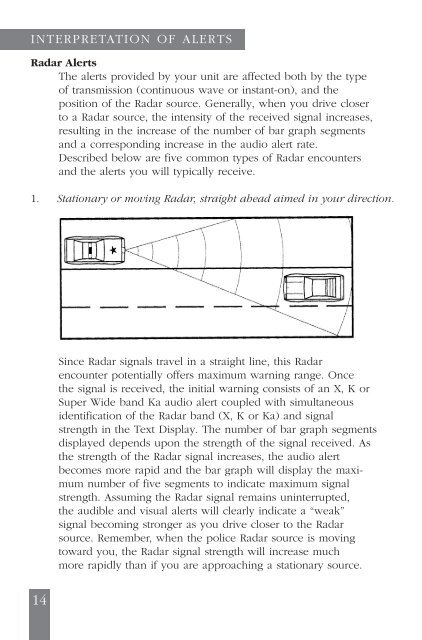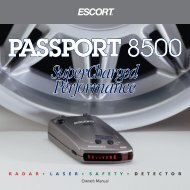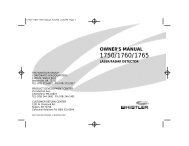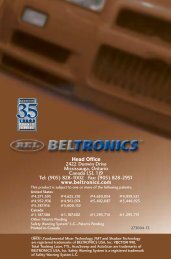Express 936 Owner's Manual - Beltronics
Express 936 Owner's Manual - Beltronics
Express 936 Owner's Manual - Beltronics
Create successful ePaper yourself
Turn your PDF publications into a flip-book with our unique Google optimized e-Paper software.
INTERPRETATION OF ALERTSRadar AlertsThe alerts provided by your unit are affected both by the typeof transmission (continuous wave or instant-on), and theposition of the Radar source. Generally, when you drive closerto a Radar source, the intensity of the received signal increases,resulting in the increase of the number of bar graph segmentsand a corresponding increase in the audio alert rate.Described below are five common types of Radar encountersand the alerts you will typically receive.1. Stationary or moving Radar, straight ahead aimed in your direction.Since Radar signals travel in a straight line, this Radarencounter potentially offers maximum warning range. Oncethe signal is received, the initial warning consists of an X, K orSuper Wide band Ka audio alert coupled with simultaneousidentification of the Radar band (X, K or Ka) and signalstrength in the Text Display. The number of bar graph segmentsdisplayed depends upon the strength of the signal received. Asthe strength of the Radar signal increases, the audio alertbecomes more rapid and the bar graph will display the maximumnumber of five segments to indicate maximum signalstrength. Assuming the Radar signal remains uninterrupted,the audible and visual alerts will clearly indicate a “weak”signal becoming stronger as you drive closer to the Radarsource. Remember, when the police Radar source is movingtoward you, the Radar signal strength will increase muchmore rapidly than if you are approaching a stationary source.14
















